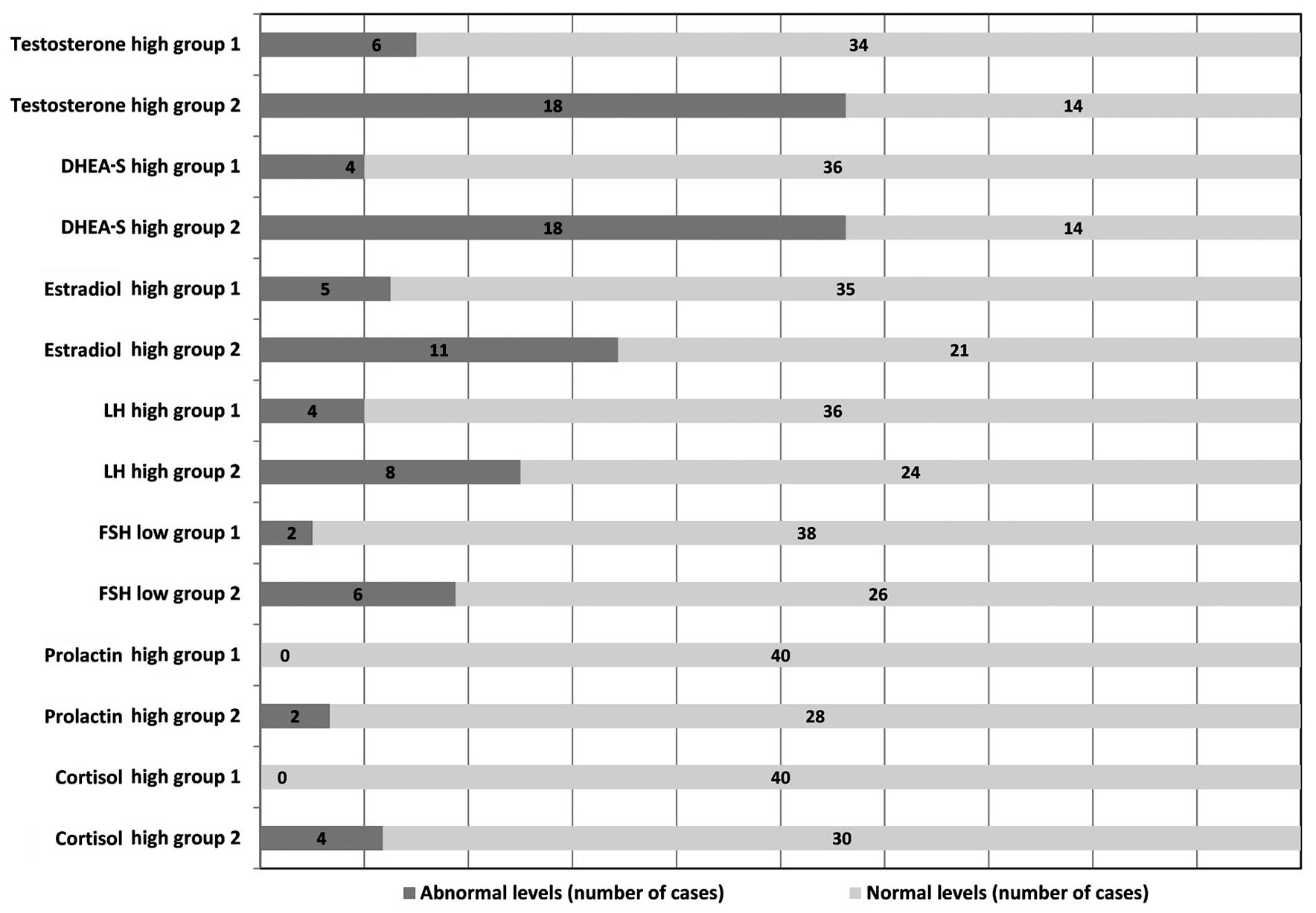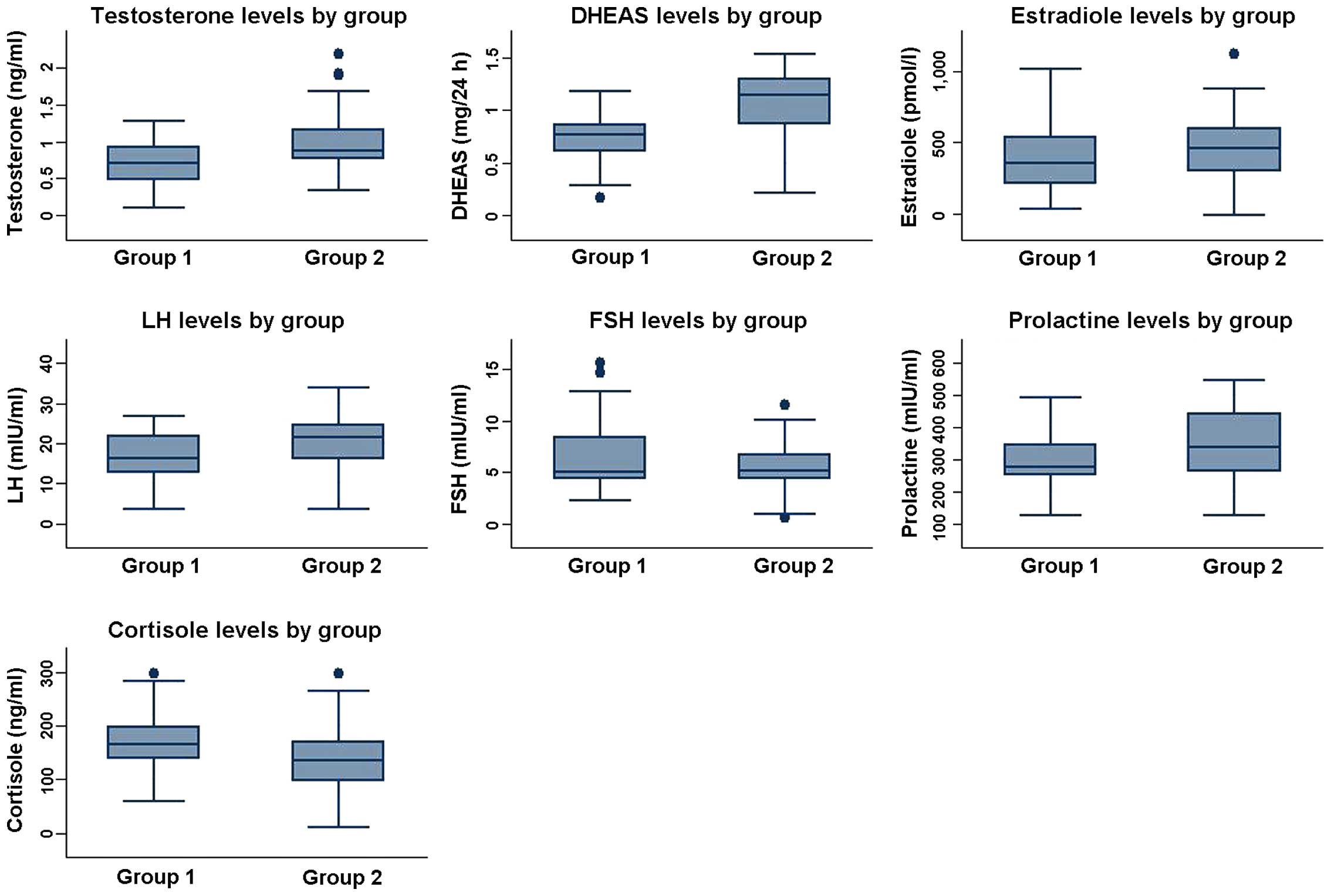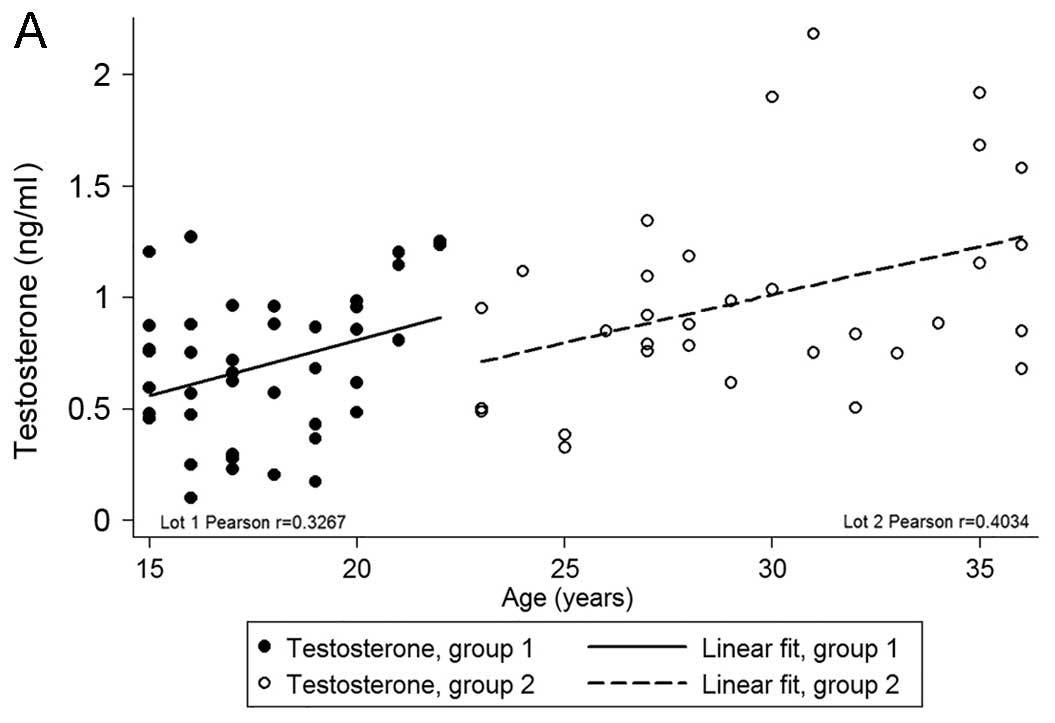Age-dependent endocrine disorders involved in the pathogenesis of refractory acne in women
- Authors:
- Published online on: November 4, 2016 https://doi.org/10.3892/mmr.2016.5924
- Pages: 5501-5506
-
Copyright: © Ianoşi et al. This is an open access article distributed under the terms of Creative Commons Attribution License.
Metrics: Total
Views: 0 (Spandidos Publications: | PMC Statistics: )
Total PDF Downloads: 0 (Spandidos Publications: | PMC Statistics: )
Abstract
Acne is a disorder of the pilosebaceous unit, common among adolescents, which may be extended to adulthood. The aim of this study was to assess the prevalence of hormonal disorders in women with acne resistance to conventional therapy. We included 72 women aged between 15 and 36 years (divided in two age groups) who presented to our clinic between May and October 2014, suffering from moderate and severe forms of papulopustular and nodulocystic acne. The subjects were non‑responsive to classic dermatological treatment or had clinical manifestation of hyperandrogenism. Based on age, we divided the women into two groups, group I with 40 patients aged 15‑22 years and group II with 32 patients aged 23-36 years. Using ELISA, a hormonal profile was performed for each patient in days 1‑3 of the menstrual cycle including, total testosterone, dehydroepiandrosterone sulfate (DHEA‑S), follicle‑stimulating hormone (FSH), luteinizing hormone (LH), estradiol, prolactin, and plasma cortisol. For statistical analysis we used Stata 13 software. We compared the hormonal profile of the two groups and identified significant differences for: testosterone levels (mean value, 0.64±0.35 vs. 0.97±0.50 ng/ml; p<0.0001), DHEA‑S levels (mean value, 0.85±0.27 vs. 1.05±0.33 mg/24 h; p=0.001), prolactin levels (mean value, 281.85±91.113 vs. 353.969±102.841 mIU/ml; p=0.002) and LH levels (14.8±6.7 vs. 20.1±8.2 mIU/ml; p=0.002) were higher in group Ⅱ. No statistically significant differences were found for estradiol (p=0.588) and cortisol (p=0.182) levels. In conclusion, refractory acne can be the first sign of systemic illness including polycystic ovary syndrome. Thus, for a correct therapeutic approach it is necessary to interpret the clinical and biochemical elements in correlation with the medical history.












